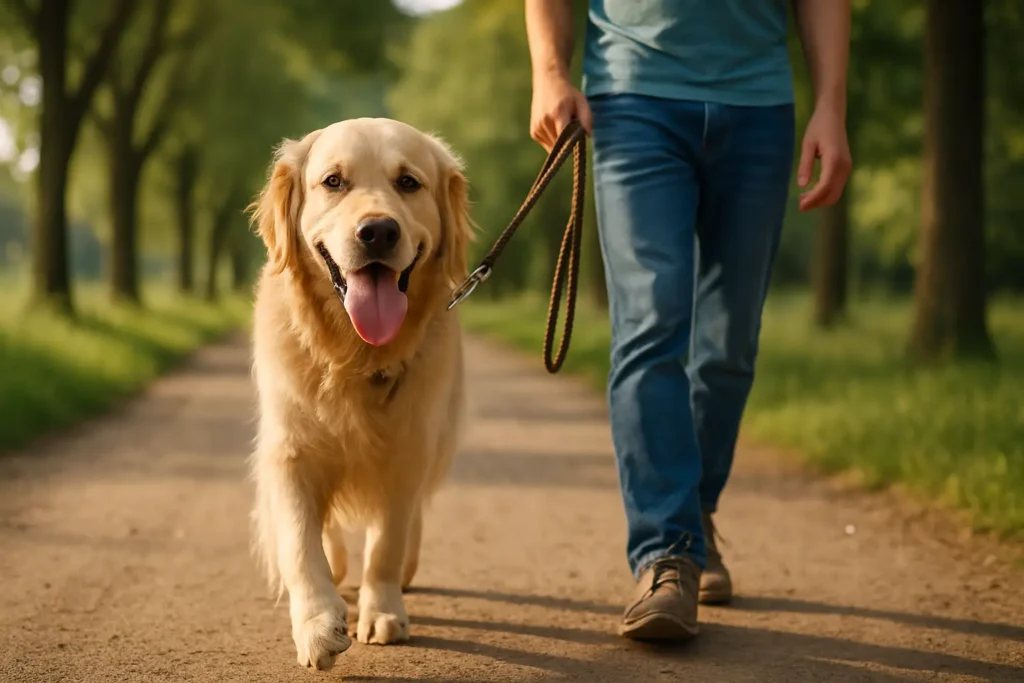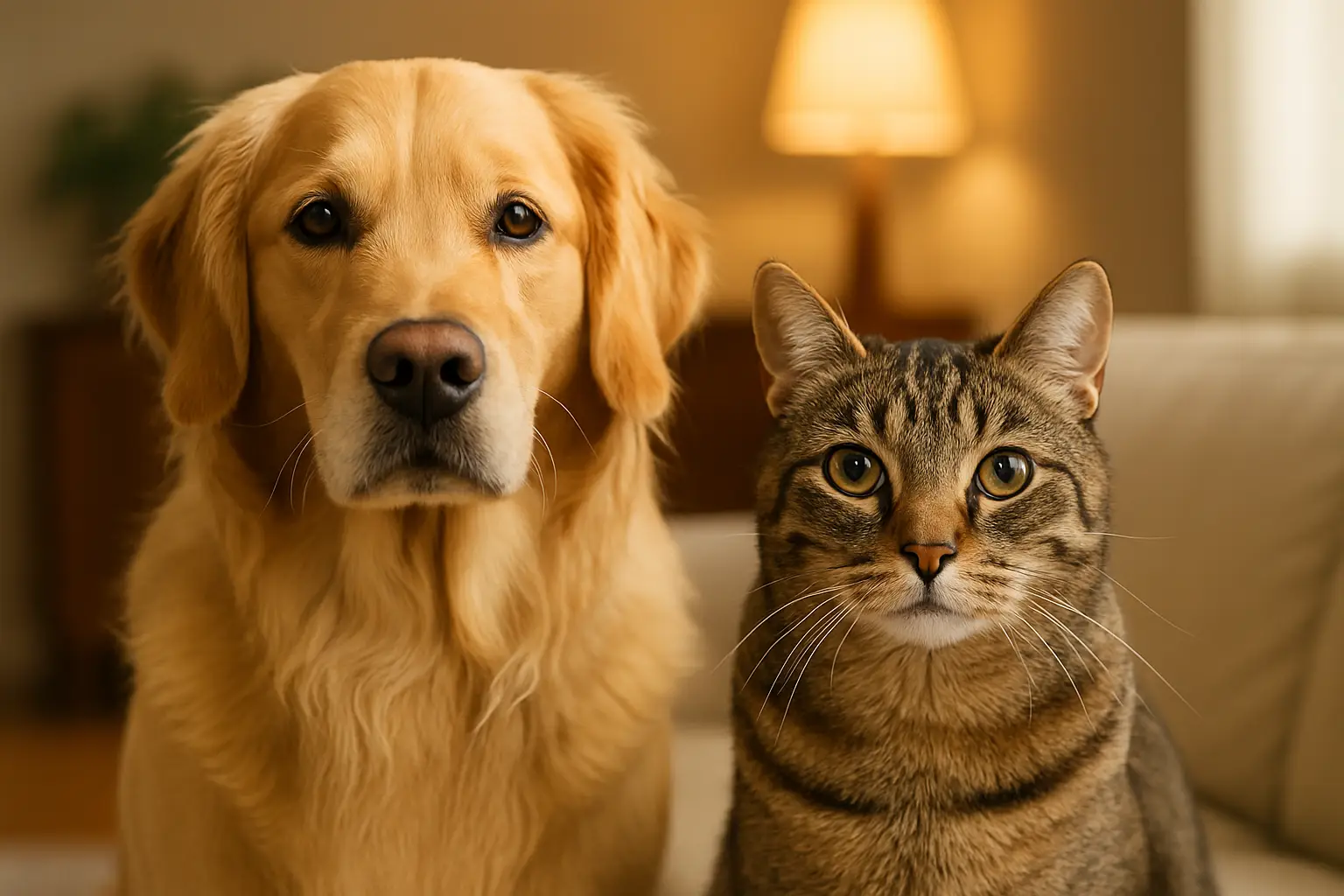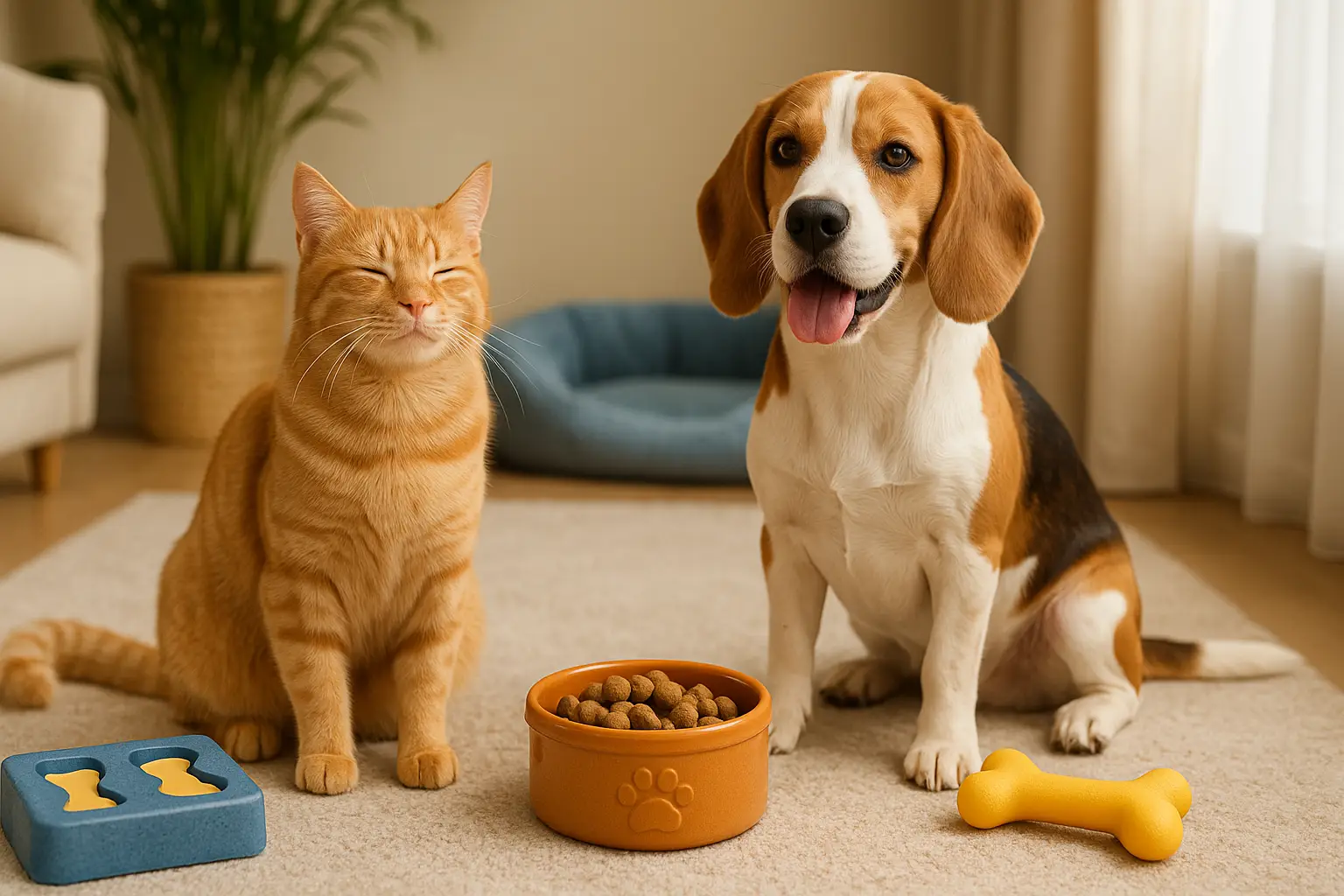How to Make Daily Walks More Enriching for Your Dog
A daily dog walk is more than just a bathroom break. For your dog, it’s a moment of exploration, communication, learning, and connection. But too often, walks become a mindless routine—same route, same pace, same distractions.
When done intentionally, walking your dog can become one of the most powerful tools for physical health, mental stimulation, and emotional bonding.
Whether your walks last 10 minutes or an hour, this guide will help you transform them into enriching dog walks that support your pet’s entire well-being.
Let’s explore how to turn a simple daily habit into a shared adventure.

Why Enriching Walks Matter
Walking is one of the few daily activities that meets multiple needs at once:
- Physical exercise
- Mental stimulation
- Social interaction
- Environmental exposure
- Relationship building
The Science Behind It:
- Dogs explore their world through scent (more than 40x more powerful than ours)
- A mentally stimulating walk helps reduce anxiety and destructive behaviors
- Sniffing, stopping, and observing helps regulate your dog’s nervous system
- Consistent movement and exploration promote longevity and better sleep
In short, a boring walk is a missed opportunity. An enriching one? A gift.
Step 1: Shift Your Mindset About Walks
Before diving into techniques, it’s important to change how you view dog walks.
Old Mindset:
- “This is just to get my dog to pee and poop.”
- “We need to get this done fast.”
- “I’m in control of the walk.”
New Mindset:
- “This is a shared experience.”
- “The walk is for my dog’s body and brain.”
- “My dog’s choices matter.”
🐾 WordPress Tip: Use a callout block: “Walks are not just exercise—they’re therapy, school, and adventure rolled into one.”
Step 2: Let Sniffing Be the Main Event
One of the simplest ways to enrich a walk? Let your dog sniff.
Why Sniffing Matters:
- Engages the olfactory brain (40% of their brain is scent-related)
- Reduces heart rate and anxiety
- Provides mental stimulation equal to a 30-minute run
- Communicates information about other dogs, people, and the environment
How to Encourage Sniffing:
- Walk slower in sniff zones
- Loosen the leash (use a 6 to 10 ft lead)
- Use a cue like “Go sniff” to signal permission
- Visit new areas with a variety of surfaces (grass, dirt, sidewalk)
⏱️ Even 10 minutes of sniff time daily reduces boredom-driven behavior.
Step 3: Change Your Route Regularly
Imagine walking the same loop every day. Boring, right? Your dog thinks so too.
Ideas to Add Variety:
- Walk your usual route in reverse
- Explore a different neighborhood once a week
- Visit local parks, trails, or greenways
- Try an urban walk with new smells, noises, and sights
- Use Google Maps to find walking paths you haven’t tried yet
🎯 Use a “Route Tracker” block on WordPress so readers can log new routes, time, and observations.
Changing the environment adds novelty, and novelty equals enrichment.
Step 4: Add Purpose to the Walk
Purpose-driven walks create deeper focus and engagement.
Types of Purposeful Walks:
- Sniffari: The goal is maximum scent exploration
- Training Walk: Work on leash manners, focus, or cues
- Fitness Walk: A brisk pace for cardio
- Photo Walk: Snap cute shots and bond over silly moments
- Play Walk: Bring toys or detour to a play area
Your dog will love the variety—and so will you.
Step 5: Use a Variety of Walking Equipment
The tools you use affect your dog’s comfort and freedom.
Recommended Gear:
- Back-clip harness for relaxed walking
- Front-clip harness for dogs learning not to pull
- 10-ft leash for more freedom
- Treat pouch for rewards
- ID tags and poop bags always
🦴 WordPress suggestion: Add a “Gear Checklist” block with links to enrichment-focused harnesses and leashes.
Always prioritize comfort and safety. Avoid choke chains or prong collars—they discourage exploration and cause stress.
Step 6: Incorporate Training Into the Walk
Walks are a great time to build trust and communication.
Training Ideas:
- Ask for a “sit” at every curb
- Practice “watch me” to refocus attention
- Work on “leave it” when encountering distractions
- Use clicker training to mark good behavior
- Reinforce loose leash walking with praise and treats
Training during walks helps your dog stay mentally engaged and builds confidence.
Step 7: Offer Choice and Autonomy
Dogs are more emotionally balanced when they have agency.
How to Give Your Dog Choices:
- Let them pick the direction at a fork
- Allow them to stop and investigate
- Offer toy options before leaving home
- Let them walk on different surfaces (grass, gravel, sidewalk)
💡 WordPress Tip: Embed a “Daily Walk Autonomy Log” so readers can track what choices their dog made and how it affected behavior.
Giving your dog small choices builds emotional resilience and trust.
Step 8: Make Time for Calm Observation
Sometimes the best enrichment is simply watching the world.
Try a “Sit and Watch” Moment:
- Sit together on a bench or curb
- Let your dog look, sniff, and process
- Watch other dogs, people, cars, or nature
- Don’t rush—this is decompression time
These quiet pauses reset your dog’s nervous system and increase attention span.
Step 9: Meet Sensory Needs with Texture and Terrain
Different textures activate your dog’s body awareness and sensory memory.
Try These Surfaces:
- Grass
- Dirt or mulch
- Pavement
- Sand (if near a beach or trail)
- Leaves or gravel
Mixing textures during the walk helps prevent boredom and activates the mind-body connection.
Step 10: Safely Introduce Social Experiences
Meeting others is enrichment—when managed well.
Best Practices:
- Ask before approaching another dog
- Let dogs approach in arcs, not head-on
- Watch body language: loose posture, wagging tails
- Don’t force shy dogs to interact
- Reward calm behavior near other people or dogs
🧩 Block Suggestion: Add a “Social Encounters Log” so readers can track positive or stressful moments.
Quality interactions > quantity. Not every dog loves socializing—and that’s okay.
Step 11: Turn Walks Into Shared Rituals
Rituals create emotional connection and anticipation.
Ritual Ideas:
- Play a favorite song while gearing up
- Use a consistent phrase like “Let’s go for a walk!”
- Give a small treat after returning home
- Post-walk brushing or cuddle session
- Add a water bowl stop in the same location
🔁 Rituals build predictability, and predictability builds trust.
Step 12: Tailor Walks for Age and Personality
Every dog is different—honor that.
Puppies:
- Short, exploratory walks (5–15 minutes)
- Avoid crowded areas or hot pavement
- Use walks as socialization time
Adults:
- Combine physical activity with enrichment
- Use walks for training reinforcement
- Add more variety and challenge
Seniors:
- Gentle pace, softer surfaces
- Shorter, more frequent walks
- Let them sniff and rest often
🧓 Add a “Custom Walk Planner” block for users to build a plan based on age and breed.
Respect your dog’s energy and limitations. Walks should be enjoyable, not exhausting.
Final Thoughts: Every Walk Is a Chance to Connect
If you only take one thing from this guide, let it be this:
Enrichment isn’t about doing more. It’s about doing what matters.
When you let your dog sniff, choose, watch, train, and play during walks—you’re not just exercising their body. You’re feeding their soul.
So slow down. Change it up. Let them lead sometimes. Use every walk to deepen your bond, stimulate their senses, and give them the kind of life they deserve.
Because to your dog, a walk isn’t just a chore. It’s the best part of their day—especially when it’s spent with you.




Post Comment